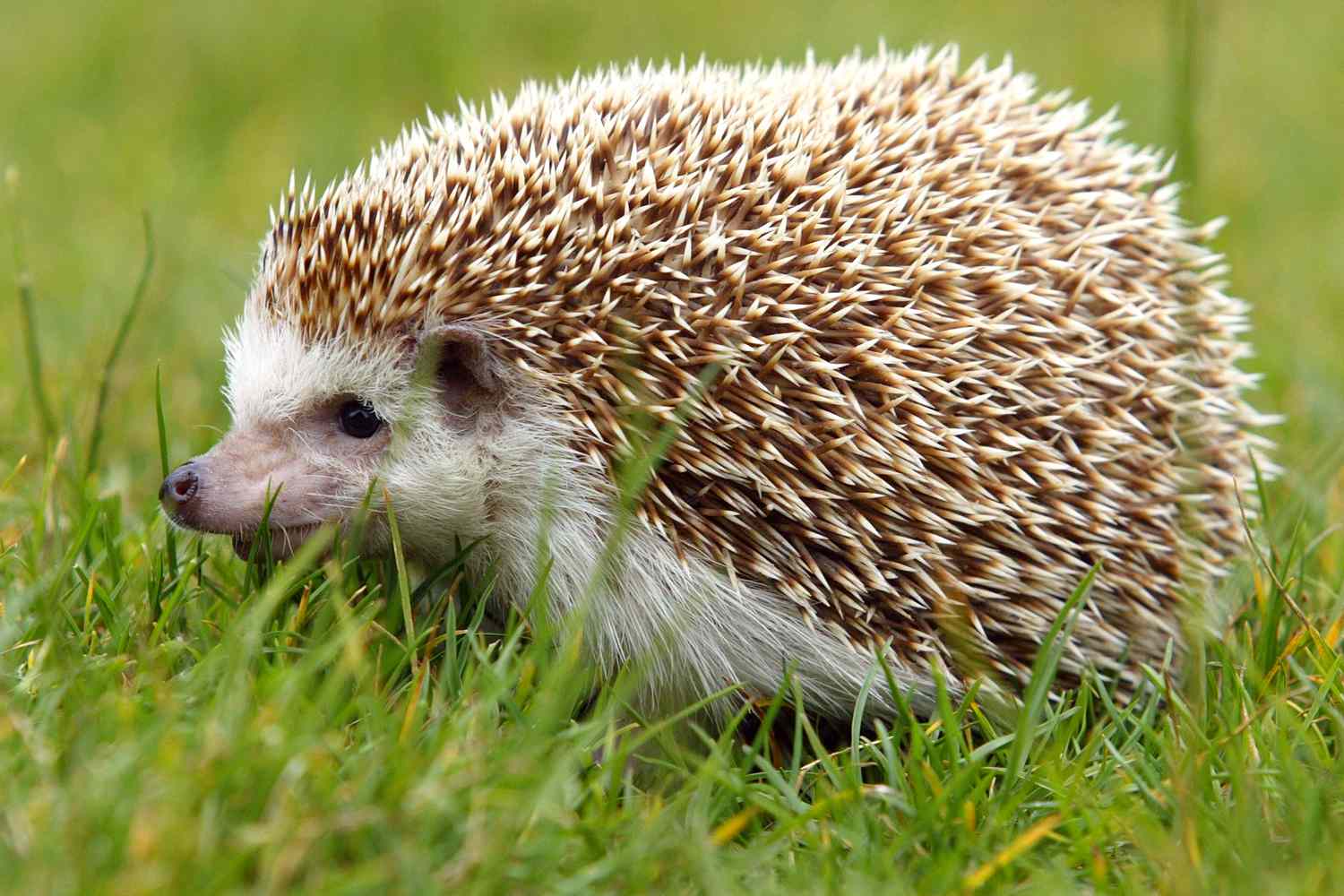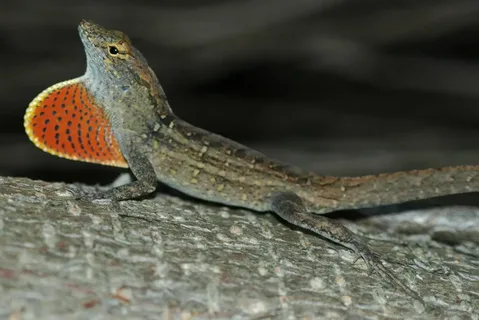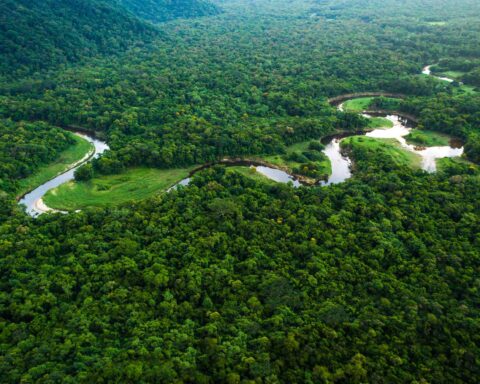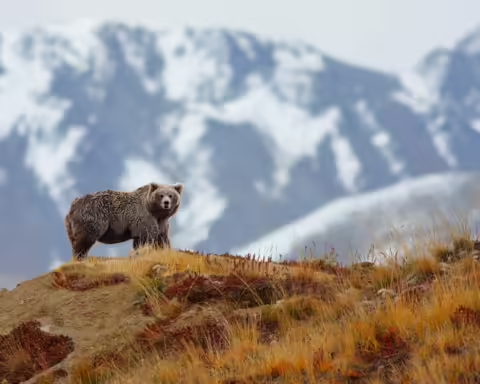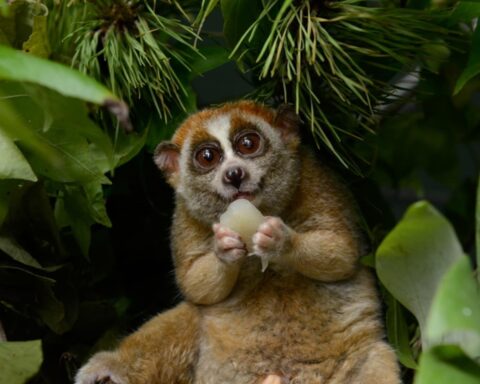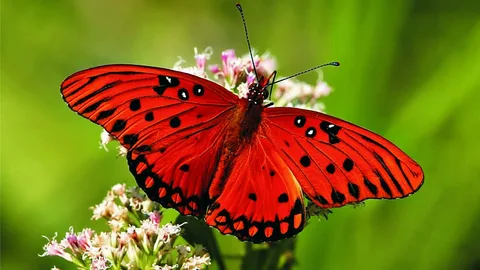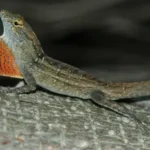Characteristics of Omnivores
Diet Variety
Omnivores are animals that consume both plant-based foods and animal products as part of their diet. These creatures have adapted to living in various environments, from the frozen tundras to scorching deserts, and as a result, they’ve developed eating habits that enable them to thrive in diverse conditions.
Here are ten examples of animals that are omnivores, highlighting their unique characteristics and dietary preferences
- Raccoons: These masked bandits are known for rummaging through garbage cans and pet food dishes in search of scraps. Their diet consists of fruits, insects, small animals, and human food waste.
- Squirrels: Squirrels are often thought to be herbivores, but many species will also eat insects, bird eggs, and even small vertebrates when the opportunity arises. They store nuts and seeds for winter sustenance, making them adaptable omnivores.
- Bears: While bears are primarily carnivores, they’ll also consume berries, nuts, honey, and fish if they’re available. These massive animals have a varied diet that changes with the seasons to ensure their survival.
- Pigs: Pigs are perhaps the most well-known omnivorous animal. In the wild, they feed on roots, insects, small mammals, and carrion. Domesticated pigs are often fed a mixture of grains and proteins to mimic their natural diet.
- Chimpanzees: As one of our closest relatives in the animal kingdom, chimpanzees are skilled omnivores. They’ll eat fruit, leaves, nuts, insects, and even small animals like monkeys and bush pigs.
- Skunks: These pungent creatures are primarily insectivorous but will also consume grubs, worms, and small vertebrates when they’re available. Skunks have a varied diet that changes with the seasons to ensure their survival.
- Opossums: Opossums are known for their opportunistic eating habits. They’ll eat fruit, insects, small animals, carrion, and even garbage when it’s readily available. Their diet is a reflection of their adaptability in various environments.
- Foxes: While foxes are primarily carnivores, they’ll also consume fruits, berries, and insects if they’re available. These cunning animals have been known to raid gardens and chicken coops in search of food.
- Crows: As intelligent birds, crows are skilled omnivores that will eat a wide variety of foods including seeds, nuts, fruits, insects, small vertebrates, and even carrion. Their diet changes with the seasons to ensure their survival.
- Hedgehogs: Despite their prickly exteriors, hedgehogs are omnivores that feed on fruits, insects, worms, snails, slugs, and small vertebrates like mice. They’ll also eat carrion if it’s readily available.
In conclusion, these ten animals illustrate the diversity of diets found in nature. Omnivory allows creatures to adapt to changing environments and exploit various food sources, making them resilient and resourceful in the face of adversity.
Omnivores consume both plants and animals, adapting to their environment.
The term Omnivore refers to an animal that consumes both plants and animals as part of their diet. These organisms have adapted to their environment, allowing them to thrive in various ecosystems by consuming a wide range of food sources.
Omnivores are found in almost every corner of the globe, from the tropical rainforests to the frozen tundras. Their ability to adapt to different environments has made them one of the most successful groups of animals on the planet.

Here are 10 examples of Omnivores that have adapted to their environment:
- Pig: Pigs are omnivorous mammals that feed on plants, insects, and small animals. They are found in forests, grasslands, and even urban areas.
- Raccoon: Raccoons are highly adaptable Omnivores that feed on fruits, nuts, insects, and small animals. They are found in North and South America, from deserts to forests.
- Crow: Crows are intelligent birds that consume a wide range of food sources, including seeds, fruits, insects, and even small animals. They are found in almost every continent on Earth.
- Dog: Dogs are domesticated mammals that have been selectively bred for thousands of years to become Omnivores. They feed on a wide range of food sources, from plants to meat.
- Bear: Bears are large, omnivorous mammals that feed on plants, insects, and small animals. They are found in forests, grasslands, and even tundras.
- Hedgehog: Hedgehogs are small, spiny mammals that feed on insects, fruits, and vegetation. They are found in forests, grasslands, and deserts.
- Monkey: Monkeys are primates that consume a wide range of food sources, including fruits, leaves, insects, and small animals. They are found in tropical rainforests around the world.
- Coyote: Coyotes are highly adaptable Omnivores that feed on plants, insects, and small animals. They are found in North America, from deserts to forests.
- Rabbit: Rabbits are herbivorous mammals that occasionally consume insects and small animals as part of their diet. They are found in forests, grasslands, and even urban areas.
- Opossum: Opossums are North American Omnivores that feed on plants, insects, and small animals. They are known for their ability to “play dead” when threatened.
In conclusion, Omnivores have adapted to various environments around the world by consuming a wide range of food sources. This flexibility has made them one of the most successful groups of animals on the planet.
Omnivorous Animals Found in Deserts
Survival Tactics
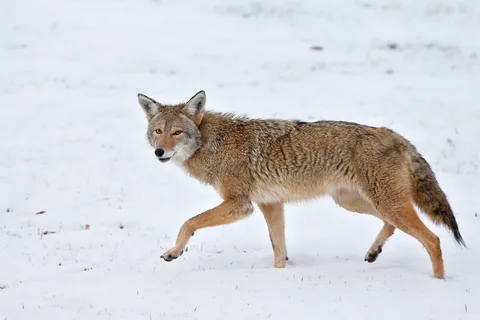
An omnivore is an animal that eats both plants and animals as its primary source of food. They have a unique diet that allows them to thrive in various environments and ecosystems. There are numerous species of animals that are classified as omnivores, each with their own distinct characteristics and survival tactics.
Here are 10 Animals That Are Omnivores:
- Raccoons: These masked mammals are known for their dexterous hands and intelligent nature. They feed on fruits, insects, and small animals, often using tools to access food sources.
- Opossums: The only marsupial found in North America, opossums are opportunistic omnivores that eat a wide variety of foods, including fruits, leaves, insects, and even small vertebrates.
- Squirrels: While primarily plant-eaters, many species of squirrels also consume insects, eggs, and even small vertebrates. They often cache food for later use, providing them with a survival tactic in harsh weather conditions.
- Crows: These intelligent birds are known to eat almost anything, from seeds and fruits to insects and small animals. Crows have been observed using tools, such as sticks, to obtain food sources.
- Chickens: While often associated with a primarily plant-based diet, chickens will also consume insects and even small vertebrates if given the opportunity.
- Ducks: Some species of ducks are omnivores that eat both aquatic plants and animals. They will feed on insects, crustaceans, and even small fish in addition to their plant-based diet.
- Hedgehogs: These small mammals eat a wide variety of foods, including fruits, leaves, insects, and even small vertebrates. Hedgehogs have also been known to consume eggs and nestlings if the opportunity arises.
- Pigs: While often associated with a primarily plant-based diet, pigs will also consume insects and small animals if given the opportunity. They are omnivores that thrive in a variety of environments.
- Skunks: These unique mammals eat a wide variety of foods, including fruits, leaves, insects, and even small vertebrates. Skunks have also been known to consume eggs and nestlings if the opportunity arises.
- Coyotes: While often associated with a primarily meat-based diet, coyotes are opportunistic omnivores that will eat both plants and animals depending on their environment. They have even been known to scavenge human waste in urban areas.
These 10 animal species demonstrate the diversity of omnivorous diets found in nature, showcasing how different environments and ecosystems can shape the feeding habits of various animals.
Desert omnivores include the kangaroo rat, which stores food for dry periods.

The concept of omnivory is a fascinating aspect of the animal kingdom, where certain species exhibit a varied diet that includes both plants and animals. One such group of omnivores can be found in arid environments, specifically in deserts, where they have adapted unique strategies to survive.
Desert Omnivores are specialized to thrive in these harsh conditions, with several examples exhibiting remarkable features. Among them is the Kangaroo Rat, which has evolved an extraordinary behavior: food storage for dry periods. This remarkable adaptation allows it to conserve energy during times of scarcity, a crucial survival mechanism in its environment.
Other desert omnivores include
- The African Elephant, which roams deserts and savannas, consuming vegetation and insects alike. Its massive size and memory allow it to recall water sources and revisit them after prolonged periods of drought.
- The Scorpions, often seen in deserts as both predators and prey, feeding on small animals like beetles and spiders while being hunted by larger creatures such as birds and lizards.
- The Dolphins (Bottlenose and others), found in coastal desert environments, where they feed on fish, squid, crustaceans, and even small marine mammals.
- The Hedgehogs, typically associated with forests, are also present in desert regions, consuming fruits, insects, small vertebrates, and plants to survive the harsh conditions.
- The Coatis, found in various parts of the world, including deserts, where they forage for fruits, insects, eggs, small mammals, and even carrion.
- The Raccoons, well-adapted omnivores present in many desert habitats, where they consume a wide range of foods including nuts, seeds, fruits, insects, reptiles, and small mammals.
- The Skunks, infamous for their distinctive odor, inhabit deserts and other environments, feeding on grubs, insects, fruits, and even small vertebrates like rodents.
- The Jaguars, the largest cat in the Americas, found in various desert ecosystems, where they prey on a variety of animals from deer to peccaries.
- The Cheetahs (Leopard and others), while often associated with grasslands, are also present in some desert regions, hunting small mammals like rodents, hares, and gazelles.
These desert omnivores have developed incredible adaptations to survive and thrive in these challenging environments. Their unique diets and strategies allow them to exploit a wide range of food sources, ensuring their survival during times of scarcity.
Wild Omnivores in Forests
Nutrient Acquisition Strategies
Nutrient acquisition strategies are essential for animals to survive and thrive in their environments. An omnivore is an animal that consumes both plant and animal matter as its primary source of food, allowing them to access a wide variety of nutrients.
Omnivores have evolved different strategies to acquire the necessary nutrients for survival. Some animals, such as bears and pigs, are primarily terrestrial and feed on plants, insects, and small animals in their environment.
Other omnivores, like raccoons and opossums, are more adaptable and will eat a wide range of foods, including fruits, nuts, insects, and small animals. These animals often have flexible digestive systems that allow them to break down and extract nutrients from different types of food.
The giant panda is another example of an omnivore with a unique nutrient acquisition strategy. This bear has a specialized diet that consists mainly of bamboo, which is low in protein but high in fiber. The panda’s digestive system has adapted to break down the cellulose in bamboo and extract as much nutrients as possible from this limited food source.
The raccoon dog is another omnivore with a unique nutrient acquisition strategy. This animal feeds on a wide variety of foods, including fruits, nuts, insects, small animals, and even carrion. The raccoon dog has a highly adaptable digestive system that allows it to break down and extract nutrients from different types of food.
The koala is an example of an omnivore with a specialized diet that consists mainly of eucalyptus leaves, which are toxic to many animals but provide essential nutrients for the koala. The koala’s digestive system has adapted to break down the toxins in eucalyptus and extract as much nutrients as possible from this food source.
The skunk is another example of an omnivore with a unique nutrient acquisition strategy. This animal feeds on a wide variety of foods, including fruits, nuts, insects, small animals, and even carrion. The skunk has a highly adaptable digestive system that allows it to break down and extract nutrients from different types of food.
Other examples of omnivores with unique nutrient acquisition strategies include the opossum, which feeds on a wide variety of foods including fruits, nuts, insects, small animals, and even carrion; the weasel, which has a highly adaptable digestive system that allows it to break down and extract nutrients from different types of food; and the mongoose, which has a unique ability to digest the venom of certain snakes.
In conclusion, nutrient acquisition strategies are essential for omnivores to survive and thrive in their environments. Different animals have evolved unique strategies to acquire the necessary nutrients, allowing them to access a wide variety of foods and adapt to different environmental conditions.
Some forestdwelling omnivores like bears collect berries for nutrition.
Bears are not the only omnivores that inhabit forests; there are several other animals that feed on both plants and animals to obtain essential nutrients. These forest-dwelling omnivores have adapted to their environments, developing unique feeding habits that allow them to thrive in their ecosystems.
The nutritional value of berries makes them an attractive food source for many omnivores. Berries are rich in essential nutrients like vitamins, minerals, and antioxidants, which support the growth and development of these animals. In addition to providing energy, berries also offer a unique combination of carbohydrates, proteins, and fats that cater to the diverse dietary needs of different omnivore species.
Other forest-dwelling omnivores besides bears include pigs, raccoons, opossums, skunks, otters, beavers, and mongooses. These animals have evolved to occupy a specific ecological niche, where they can feed on a variety of plants and animals to meet their nutritional requirements.
Some examples of forest-dwelling omnivores that collect berries for nutrition include:
- Pigs: Pigs are opportunistic eaters that feed on a wide range of plants, including leaves, stems, roots, fruits, and insects.
- Raccoons: Raccoons have dexterous hands and sharp claws that enable them to collect berries from tree branches or dig up roots in search of food.
- Opossums: Opossums are known for their omnivorous diet, which includes fruits like berries, as well as insects, small animals, and carrion.
These forest-dwelling omnivores play a vital role in maintaining the balance of their ecosystems. By consuming plants and animals in different parts of the forest, they help regulate population sizes, disperse seeds, and recycle nutrients. In turn, these animals also support other species through food webs and provide a source of income for humans who hunt or raise them.
Omnivorous Mammals and Their Reproductive Cycles
Reproductive Patterns
Omnivorous animals have diverse reproductive patterns, reflecting the variety of species, environments, and diets that characterize this dietary category. Omnivores are defined as animals that consume both plant-based foods (fruits, vegetation, and grains) and animal-derived substances (meat, eggs, dairy, and insects).
Among the many species of omnivorous animals, some exhibit notable reproductive patterns. For example:
- Chimpanzees: These intelligent primates have a relatively long gestation period (around 8 months) and give birth to single offspring after a brief breeding season. Female chimpanzees typically begin reproducing at around 13 years of age, with an average litter size of one.
- Raccoons: Raccoon reproduction is characterized by short gestation periods (around 65 days) and large litters (usually 2-7 pups). Female raccoons can breed year-round, making them a common sight in many urban and rural areas.
- Pigs: Pigs have a relatively long gestation period (approximately 114 days) and often give birth to litters of 8-12 piglets. Female pigs typically begin reproducing at around 6 months of age, making them one of the earliest reproductive mammals.
- Crows: These intelligent birds have complex social structures, which can influence their reproductive patterns. Crows form long-term monogamous pairs during breeding season and typically nest in colonial groups. Female crows lay 2-5 eggs per clutch, with incubation periods ranging from 18-20 days.
- Hedgehogs: Despite their spiny exteriors, hedgehogs are prolific breeders. They have a short gestation period (around 90 days) and often give birth to large litters of pups. Female hedgehogs can have up to four litters per year in ideal conditions.
- Skunks: Skunks exhibit interesting reproductive patterns, with females giving birth to small litters (1-3 pups) after a short gestation period (around 60 days). They typically breed from March to July and are solitary animals for most of the year.
- Bears: Omnivorous bears, such as black bears or Asiatic black bears, exhibit varied reproductive patterns depending on species, environment, and available food sources. Typically, females give birth to single cubs after a prolonged gestation period (around 220 days).
- Monkeys: This group of omnivorous primates includes various species with diverse reproductive patterns, such as the squirrel monkey, which has a relatively short gestation period (about 140 days) and gives birth to twins.
- Weasels: Weasels are small, carnivorous mammals that have adapted omnivorous diets in some species, like the least weasel (Mustela nivalis). These animals typically breed during spring and give birth to litters of 2-8 pups after a gestation period of around 35 days.
- Bats: Some bat species are opportunistic omnivores, feeding on both insects and small vertebrates. The reproductive patterns of bats vary widely among the different species, but many give birth to single pups after a short gestation period (about 40-50 days).
These animals’ diverse reproductive patterns are shaped by their ecological niches, evolutionary adaptations, and interactions with their environments. Omnivorous animals have evolved remarkable strategies for survival, exploiting food sources that might not be readily available to purely carnivorous or herbivorous species.
Omnivorous mammals, such as raccoons, give birth to litters in various seasons.
- Omnivorous mammals, including species like raccoons, are characterized by their ability to consume a wide variety of food sources, including both plant and animal matter.
- This dietary flexibility allows them to adapt to different environments and seasons, making them highly resilient in the face of changing circumstances.
- One key adaptation that enables omnivorous mammals like raccoons to thrive is their ability to give birth to litters at various times of the year.
- This flexible reproductive strategy allows them to capitalize on abundant food sources and optimal breeding conditions, thereby increasing their chances of survival and success.
- For example, some species of raccoons may breed in the spring, taking advantage of the abundance of fresh vegetation and insects that become available during this time.
- Others, however, may choose to give birth in the fall, when food sources are more limited but competition for resources is also reduced.
- This strategy is particularly useful in environments with unpredictable weather patterns or where food availability varies significantly throughout the year.
- Omnivorous mammals like raccoons have evolved a range of physiological and behavioral adaptations that enable them to exploit different food sources at various times of the year.
- For instance, some species may switch between plant-based foods in the summer and more protein-rich foods in the winter, when animal matter is more readily available.
- This flexibility allows omnivorous mammals to maintain a consistent energy balance throughout the year, even in environments where food sources are scarce or seasonal.
- Additionally, their ability to give birth to litters at various times of the year also enables them to rapidly expand and contract their populations in response to changing environmental conditions.
- This adaptability is crucial for ensuring the long-term survival and success of omnivorous mammals like raccoons, which are often found in a range of different habitats and ecosystems.
Predators That Are Also Omnivores
Predation and Scavenging Behaviors
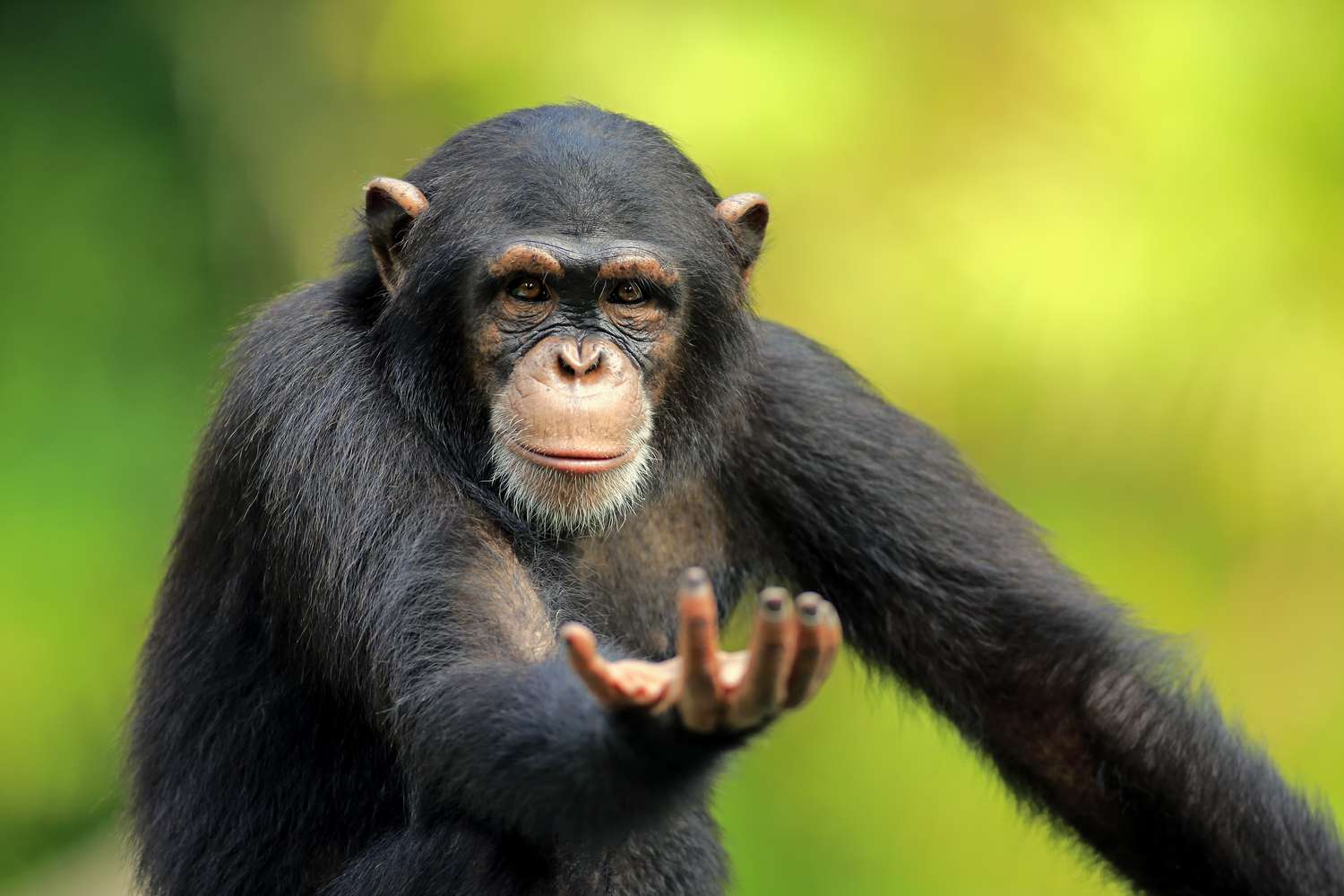
Predation and scavenging behaviors are fascinating aspects of the natural world, where animals have evolved to obtain food from various sources. Predators primarily hunt and kill their prey for sustenance, while scavengers feed on carrion or decaying matter that other animals have left behind.
Omnivores, in particular, exhibit a unique combination of both predation and scavenging behaviors, as they consume a wide range of food sources including plants, insects, fruits, nuts, seeds, eggs, small animals, and even carrion. Here are 10 fascinating examples of omnivorous animals:
- Raccoons (Procyon lotor): These masked bandits are known to raid garbage cans and gardens in search of food, but they also hunt for small mammals like mice and frogs. They will consume eggs from nests, fruits, nuts, and even insects.
- Bears (Ursidae family): Omnivorous bears, including black bears, grizzly bears, and polar bears, feed on plants, berries, fish, honey, insects, and small mammals like rodents. They are also known to scavenge for carrion in areas where they live.
- Chimpanzees (Pan troglodytes): As one of the closest relatives of humans, chimpanzees exhibit complex omnivorous behavior. They hunt monkeys, bush pigs, and small antelopes for meat, while also consuming fruits, leaves, and nuts.
- Ravens (Corvus corax): These intelligent birds are known to engage in various forms of scavenging, including following flocks of animals to feed on their carrion. They will also hunt for insects, small mammals, and even eggs from nests.
- Opossums (Didelphimorphia order): North America’s only marsupial is an opportunistic omnivore that feeds on fruits, nuts, seeds, and insects. They are also known to consume carrion and have been observed hunting small animals like mice and snakes.
- Hyenas (Crocuta crocuta): Spotted hyenas are skilled scavengers that primarily feed on carrion left by other predators. However, they will also hunt small mammals, antelopes, and wildebeests for meat.
- Monkeys (Cercopithecidae family): Like chimpanzees, various monkey species in the Cercopithecidae family exhibit omnivorous behavior. They consume a mix of fruits, leaves, insects, and small animals like lizards and birds.
- Otters (Mustela putorius): These playful aquatic mammals primarily feed on fish, crustaceans, and other marine animals. However, they will also scavenge for carrion in areas where they live.
- Pigs (Sus scrofa): Feral pigs are known to be omnivores that consume a wide range of food sources including plants, insects, fruits, nuts, seeds, eggs, small animals like rodents and birds, as well as carrion.
- Skunks (Mephitis mephitis): While primarily insectivorous, skunks will also consume small vertebrates, fruits, and nuts if other food sources are scarce. They may even scavenge for carrion in rare instances.
The diverse range of omnivorous animals highlights the adaptability of various species to their environment and available food resources. By studying these animals and their feeding behaviors, scientists gain a better understanding of ecological balance, conservation, and the complex relationships between organisms in ecosystems.
Coyotes are an example of predators that consume both plants and animals.
Coyotes are one of the many examples of omnivores, which are organisms that consume both plant and animal matter for their survival. Coyotes are highly adaptable canines that inhabit various ecosystems, including deserts, forests, and grasslands, across North America.
As coyotes roam through these different environments, they feed on a wide variety of plants and animals to meet their dietary needs. They are known to scavenge for fruits, berries, and vegetation in the summer months when food is abundant. These plant materials provide them with essential nutrients such as fiber, vitamins, and minerals.
However, coyotes do not rely solely on plants for nutrition. They are also skilled hunters that prey upon small mammals like rodents, rabbits, and hares. Coyotes have a strong predatory instinct and use their sharp senses of smell, hearing, and vision to locate and catch unsuspecting animals. In addition to these mammalian sources, coyotes will occasionally eat birds, reptiles, amphibians, and even carrion when the opportunity arises.
In urban areas, coyotes may also consume pet food left outdoors or garbage that has not been properly secured. This opportunistic feeding behavior is a result of their adaptability and ability to thrive in various environments.
Overall, the omnivorous diet of coyotes allows them to survive and thrive in diverse ecosystems with minimal competition for resources. Their adaptability and flexibility make them a successful predator that has been able to coexist with humans despite their own impact on native species and habitats.
Animal Adaptations for Omnivorous Diets
Physiological Specializations
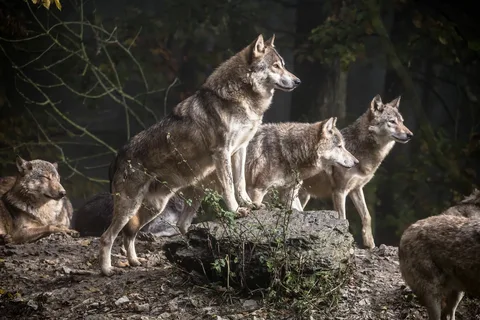
Physiological specializations enable animals to adapt to their environments and exploit specific food sources. In the case of omnivores, these adaptations allow them to consume a wide variety of foods including plants, fruits, insects, small animals, and even carrion.
Omnivory is common in many animal species, as it provides them with a flexible diet that can be adjusted according to seasonal changes or environmental conditions. Here are 10 examples of animals that are omnivores:
Chimpanzees: Chimpanzees are one of the closest relatives of humans and are found in tropical forests in Africa. They feed on a wide range of foods including fruits, leaves, seeds, nuts, insects, and even small animals.
Fruits make up a significant portion of their diet, but they also consume bark, sap, and other plant materials to supplement their nutrition.
Raccoons: Raccoons are found in various parts of North America and are known for their dexterous hands and omnivorous diet. They feed on insects, fruits, nuts, seeds, and even small animals like rodents and birds.
Their adaptability to different environments is due to the flexibility of their digestive system, which allows them to thrive in various ecological niches.
Skunks: Skunks are found in North America and have a distinctive black-and-white striped fur. They feed on insects, fruits, nuts, seeds, and small animals like mice and lizards.
Their powerful claws and dexterous front paws enable them to extract food from tight spaces and burrows.
Pigs: Pigs are found in various parts of the world and have been domesticated for thousands of years. They feed on a wide range of foods including roots, tubers, fruits, nuts, seeds, insects, and small animals.
Their omnivorous diet is adapted to their original forest-dwelling environment where they would eat almost anything they could find.
Wolves: Wolves are found in various parts of the world and have a highly specialized digestive system. They feed on meat, including small mammals like rodents and hares, as well as fruits, nuts, seeds, and insects.
Their hunting strategy involves coordinated attacks on prey, which provides them with essential nutrients and allows them to survive in various environments.
Dogs: Dogs have been domesticated for thousands of years and feed on a wide range of foods including meat, fruits, nuts, seeds, insects, and even small animals.
Their adaptability to different environments is due to their ability to thrive in various ecological niches, from urban areas to rural regions.
Hedgehogs: Hedgehogs are found in Africa and Eurasia and feed on a variety of foods including insects, fruits, nuts, seeds, and small animals like rodents and birds.
Their protective spines and powerful claws enable them to defend themselves against predators while foraging for food in dense vegetation.
Badgers: Badgers are found in various parts of the world and have a distinctive white stripe on their face. They feed on insects, fruits, nuts, seeds, small animals like rodents and lizards, and even carrion.
Their digging ability and strong jaws enable them to extract food from underground burrows and complex root systems.
Opossums: Opossums are found in the Americas and are known for their distinctive prehensile tails. They feed on a wide range of foods including insects, fruits, nuts, seeds, small animals like rodents and birds, and even carrion.
Their omnivorous diet is adapted to their original forest-dwelling environment where they would eat almost anything they could find.
These examples illustrate the diversity of physiological specializations in omnivores, which enable them to adapt to various environments and exploit specific food sources.
Some omnivores have tongues with sticky secretions to catch insects.
- Omnivores, by definition, are animals that consume both plants and animal-based food sources. This diverse group includes a wide range of species that have adapted to various environments and feeding habits.
- In some omnivores, the mouth is equipped with specialized features that enhance their ability to catch prey or gather food. For example, tongues with sticky secretions are found in certain animals that help them catch insects. These sticky substances can be similar to honeydew produced by sap-sucking insects or other sweet substances that attract and immobilize prey.
- This adaptation is particularly useful for omnivores living in environments where insect populations are abundant, such as tropical forests or grasslands. For instance:
- Raccoons (Procyon lotor): These mammals use their dexterous hands and tongues to catch insects and other small animals. Their sharp, pointed tongues are covered in mucus that helps them capture prey.
- Opossums (Didelphimorphia): Some opossum species possess sticky secretions on their tongues to catch ants and termites. This adaptation is especially useful for these animals as they are often forced to eat insects due to the scarcity of other food sources.
- Civet cats (Viverridae): These small, carnivorous mammals have tongues with sticky secretions that allow them to catch insects and even small vertebrates like frogs.
- Spiders (Araneae): While not typically considered omnivores in the classical sense, some spiders consume both plants and animals as part of their diet. Their webs are covered in sticky substances that help them capture prey, including insects and even small vertebrates.
- Lizards (Sauria): Certain species of lizards, like the green iguana, have tongues with sticky secretions that enable them to catch insects. This adaptation is particularly useful for these animals as they often live in environments where insect populations are abundant.
- Skunks (Mephitis mephitis): Skunks possess a strong-smelling secretion from their anal glands, but they also have tongues with sticky secretions to catch insects and grubs.
- Hedgehogs (Erinaceidae): Some species of hedgehogs use their sharp teeth and tongues with sticky secretions to catch insects and small vertebrates like frogs.
- Cheetahs (Acinonyx jubatus): These big cats have evolved to primarily consume large ungulates, but they also possess sticky secretions on their tongues that help them catch smaller prey like rodents and hares.
- Foxes (Canidae): Some species of foxes have tongues with sticky secretions to catch small mammals like rabbits and hares. This adaptation is particularly useful for these animals as they often live in environments where large ungulates are scarce.
- Rabbits (Leporidae): While not typically considered carnivores, some species of rabbits possess sticky secretions on their tongues to catch small insects and even small vertebrates like mice.
- Countries With The Longest Coastline - September 4, 2024
- Drinking Ages Around The World - September 4, 2024
- 7 Most Beautiful Small Towns Near Nashville - September 4, 2024

